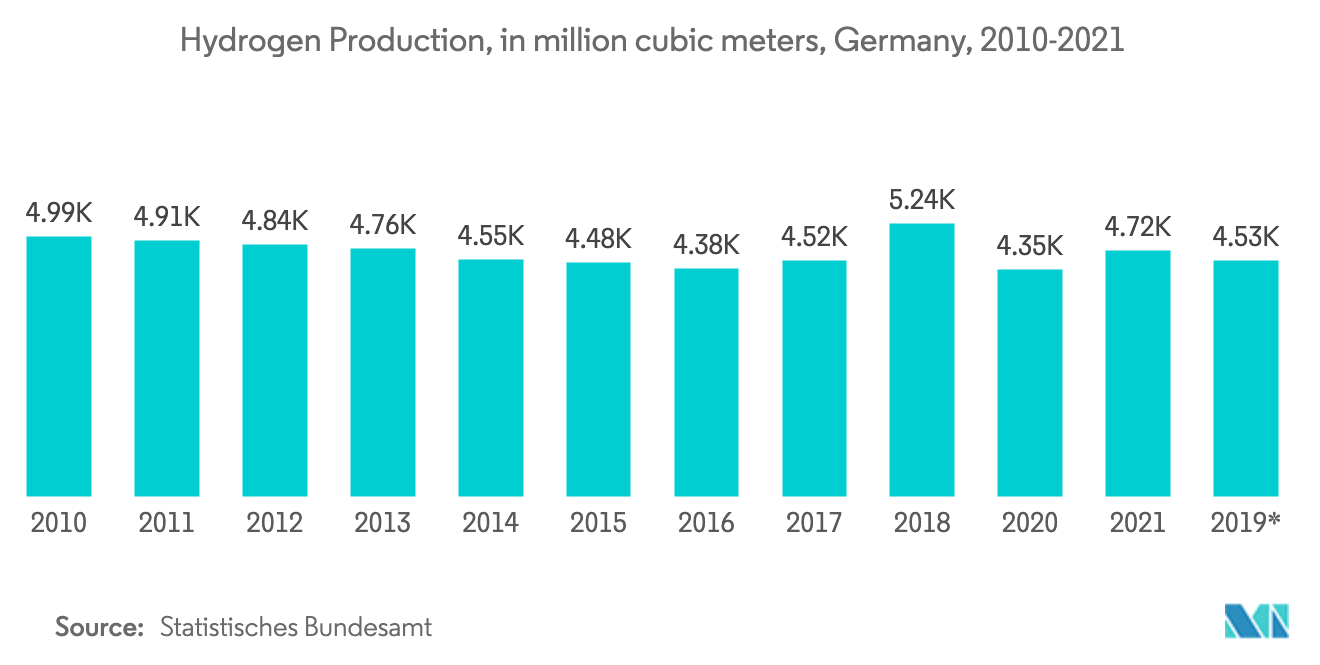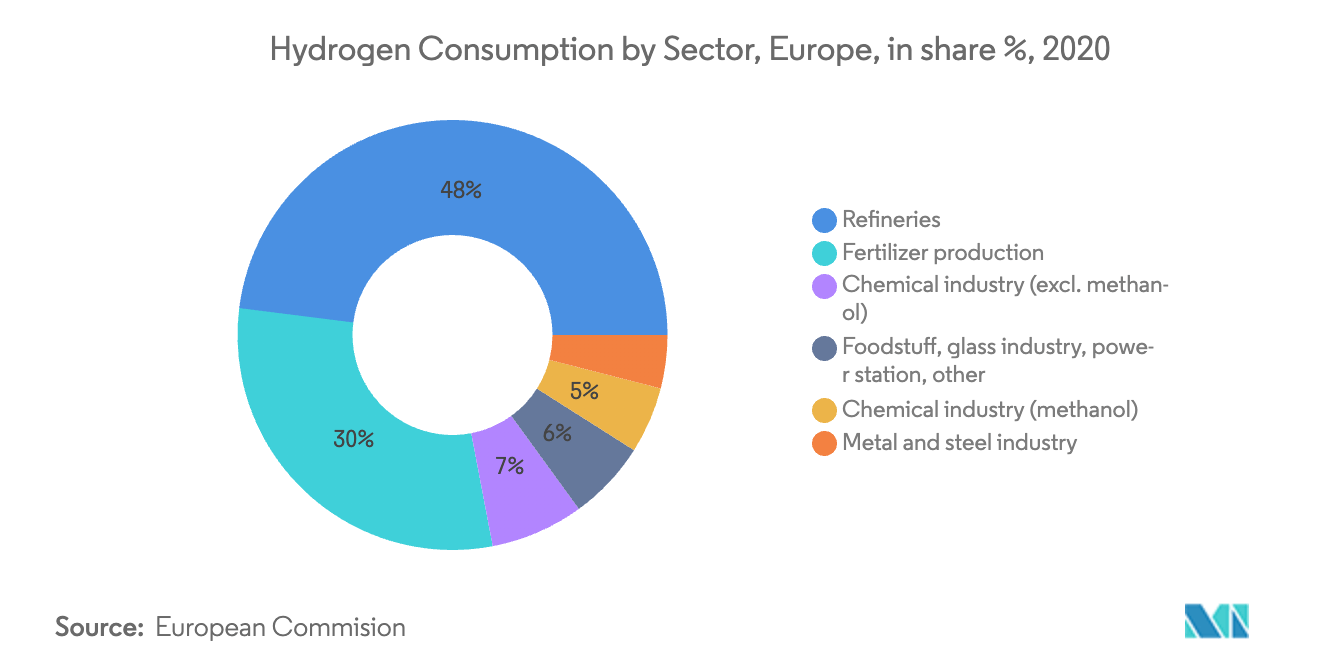Market Trends of Europe Power to Gas Industry
This section covers the major market trends shaping the Europe Power to Gas Market according to our research experts:
Germany is going to dominate the market
- Germany is one of the major countries in the European power to gas Market. As of 2020, Germany is home to around 40 small power-to-gas pilot projects that harness surplus green power, mainly wind and solar projects, to carry out electrolysis, splitting water into oxygen and hydrogen to produce zero-carbon fuel.
- Furthermore, according to Deutscher Verein des Gas- und Wasserfaches (DVGW), Germany is planning to build a power-to-gas capacity of 5 GW by 2023 and 40 GW by 2050. It seeks to develop zero-carbon fuels for homes, factories and vehicles. Thus, such government targets are likely to increase the power of the gas market in the region during the forecast period.
- Similarly, in June 2020, the government in Germany rolled out a national hydrogen strategy that aims for a 200-fold increase in electrolyzer capacity of up to 5 GW by 2030. Such an increase is likely to increase the production of green hydrogen to 14 TWh. Thus, increasing the power to the gas market during the forecast period.
- Overall, the government support and development of hydrogen power to gas projects would aid the market.

Power to hydrogen to dominate the market
- The technology has advantages such as higher power storage capacity and longer discharge times than current energy storage technologies. Hydrogen can also be injected directly into natural gas grids. However, hydrogen injection is subject to regulations due to safety and technical concerns and varies country-wise. For instance, the limit of hydrogen in natural gas grids in the United Kingdom is 0.1%, while it is 12% in the Netherlands.
- Due to the falling costs of renewable energy technologies such as solar and wind, energy storage technologies such as Power-To-Gas (PtG) technology are becoming increasingly attractive, and the installed capacity of commercial electrolyzer systems has been growing steadily over the past few years. There are only a few commercially viable water electrolysis technologies, and the two most widely used technologies are alkaline water electrolysis (AWE) and proton exchange membrane (PEM) electrolysis.
- PEM electrolyzers utilize platinum group metal (PGM) catalysts synthesized in ultra-thin layers to a polymer membrane to achieve the critical reactions producing high-purity hydrogen. They have a relatively smaller footprint than alternatives and are flexible in operation; Hence, they can effectively harness the intermittency of renewable energy.
- Additionally, the rising usage of green hydrogen for industrial applications such as steel manufacture is another significant driver for the growth of the segment. In 2021, the world's first pilot project for producing carbon-free steel using low-carbon hydrogen began operation in Sweden.

